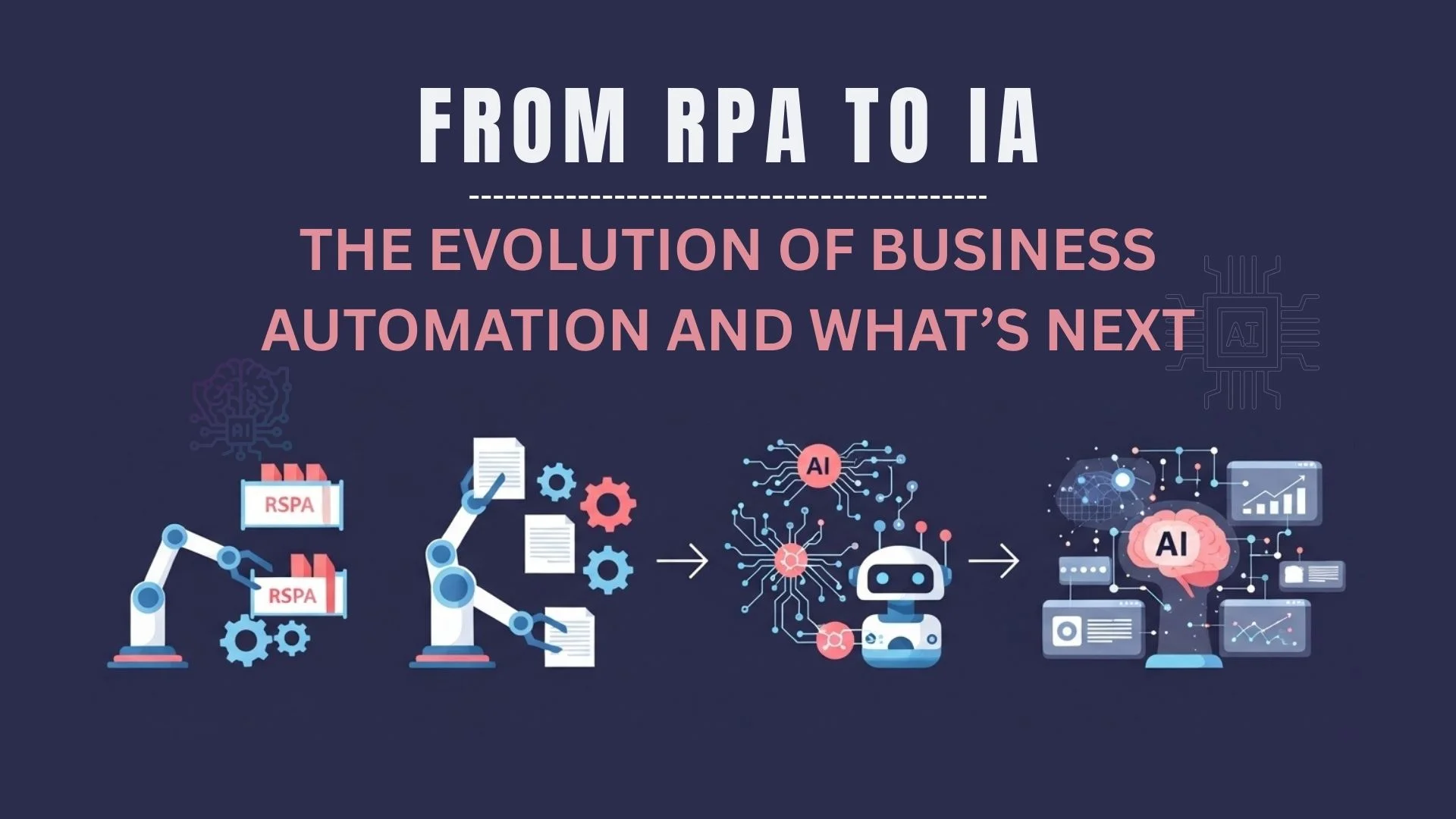Robotic Process Automation (RPA) is now accessible to businesses of all sizes, not just big companies. RPA uses software “robots” to automate repetitive tasks, helping organizations save time, reduce mistakes, and improve efficiency. This blog post will discuss seven important features of RPA. By learning about these features, you can use RPA to improve your workflows, boost productivity, and drive growth in your organization.
Easy-to-Use Interface
Modern Robotic Process Automation (RPA) platforms are now much easier to use. In the past, you needed a lot of coding knowledge and IT skills to set up RPA. Today’s platforms feature simplified interfaces, empowering business users to create and manage automation with ease.
Easy Design and Visual Workflows
Today’s RPA platforms often have drag-and-drop features. This means users can create process flows by selecting pre-built actions and connecting them visually. There’s no need for complex coding, making RPA accessible to more people. Business users can now directly participate in the automation process, using their expertise to ensure the automation fits their specific needs.
Making RPA Accessible
By making RPA easy to use, these interfaces bridge the gap between business and IT departments. Business users can now handle automation projects, reducing the load on IT teams and speeding up implementation. This teamwork encourages innovation, where employees are motivated to find automation opportunities and improve business processes continuously.
An easy-to-use interface is key to unlocking the full benefits of RPA. It allows business users to take an active role in automation, boosting efficiency, productivity, and business growth.
Scalability
The ability to adjust and change is important for businesses today. Robotic Process Automation is great at this because it can easily grow and shrink depending on what your company needs.
What is Scalability in RPA?
Scalability in RPA means being able to handle more work without losing performance. As your business grows or experiences busy seasons, the need for automation may increase. RPA bots can be easily added or copied to keep up with these demands.
How RPA Bots Scale
RPA is very flexible. For example, if your customer service team gets a lot of inquiries during a product launch, you can quickly deploy more bots to manage the extra workload, keeping customers happy. Similarly, in finance or accounting, RPA bots can process invoices, reconcile accounts, and generate reports efficiently during busy periods.
Benefits for Growing Businesses
For businesses that are growing fast, scalability is essential. RPA lets you automate processes without needing big investments in infrastructure. As your business grows, you can add more bots to handle the increased work, keeping operations smooth and cost-effective.
Scalability is also helpful for businesses with seasonal peaks. During busy times like the holiday season in retail or tax season in accounting, you can scale up RPA bots to optimize resources and avoid slowdowns.
Scalability is a key advantage of RPA. It allows organizations to adapt to changes quickly and efficiently, making automation a valuable asset throughout their growth.
Integration Capabilities
Robotic Process Automation (RPA) excels when it seamlessly integrates with your existing IT infrastructure, allowing software robots to work harmoniously with your current systems and applications. This is crucial for automating processes that span multiple platforms, such as extracting data from a database, manipulating it in a spreadsheet, and sending the results via email.
RPA bridges the gaps between these systems, enabling end-to-end automation. Common integration points include databases, email clients, and ERP systems. RPA platforms achieve this by utilizing APIs (Application Programming Interfaces), which act as messengers between different software programs. This eliminates the need for custom coding and ensures smooth process automation across your entire tech ecosystem.
Security
As automation adoption grows, so do security concerns. While the use of software robots for sensitive tasks raises valid concerns about data breaches and unauthorized access, modern RPA platforms are equipped with robust security measures to protect your automated processes.
RPA enhances security by minimizing human error, a common source of vulnerabilities. Additionally, RPA bots adhere to strict rules and access controls, reducing the risk of unauthorized actions. Key security features in RPA platforms include:
- Encryption: Protects data during transmission and storage to maintain confidentiality.
- Access Controls: Defines user permissions to ensure that only authorized personnel can modify workflows.
- Audit Trails: Logs all bot activities for transparency and investigation of suspicious behavior.
RPA can further bolster security by automating routine security checks, masking sensitive data within workflows, and integrating with security information and event management (SIEM) systems to expedite threat detection and response.
Enhancing Security with RPA
In addition to these built-in security features, RPA can be leveraged to actively enhance security in various ways:
Automated Security Checks
RPA bots can be programmed to perform routine security checks, such as scanning for vulnerabilities or monitoring for suspicious login attempts.
Data Masking
Sensitive data can be masked or anonymized within RPA workflows, ensuring that only authorized personnel have access to the full details.
Incident Response
RPA bots can be integrated with security information and event management (SIEM) systems to automate incident response, reducing the time it takes to identify and mitigate security threats.
Using a thorough security strategy, RPA platforms can help organizations protect themselves from cyber threats and still enjoy the advantages of automation.
Artificial Intelligence (AI) Integration
Robotic Process Automation (RPA) is great at handling rule-based tasks. When we combine RPA with Artificial Intelligence (AI), it becomes even more powerful. This combination allows RPA bots to take on more complicated tasks that used to require human effort.
AI
AI acts like the brain, enhancing the strength of Robotic Process Automation (RPA). By adding AI to RPA, companies can automate tasks that need decision-making, judgment, and handling of unstructured data. This makes it possible to automate more complex and detailed tasks that were too difficult for traditional RPA alone.
Enhancing RPA with AI Capabilities
AI brings a wealth of capabilities to the RPA table, including:
- Natural Language Processing (NLP): NLP enables RPA bots to understand and interpret human language, making it possible to automate tasks like email triage, sentiment analysis, and chatbot interactions.
- Computer Vision: By equipping RPA bots with the ability to “see” and interpret visual information, computer vision unlocks applications such as document processing, image recognition, and even robotic assembly line automation.
- Machine Learning (ML): ML algorithms allow RPA bots to learn from data and improve their performance over time. This is particularly valuable for tasks that involve pattern recognition, anomaly detection, or predictive analytics.
Examples of AI-Powered RPA Applications
AI and RPA are changing many industries. Here are a few examples:
- Healthcare: AI helps doctors diagnose diseases faster, and RPA handles repetitive tasks like scheduling appointments.
- Finance: AI detects fraud, and RPA processes transactions quickly.
- Manufacturing: AI improves product quality, and RPA automates assembly lines.
- Customer Service: AI answers common questions, and RPA manages customer data efficiently.
- Retail: AI suggests products to customers, and RPA manages inventory.
These technologies make work faster and more efficient in different fields.
Conclusion
Robotic Process Automation (RPA) is a powerful tool that can change how your business works. With easy-to-use interfaces and smart automation driven by AI, RPA makes tasks simpler, reduces mistakes, and offers helpful insights, helping your organization succeed in the digital era.
Have you explored RPA solutions for your business? Share your thoughts, questions, or experiences in the comments below! We’re eager to hear your perspective on how RPA can transform your organization.





